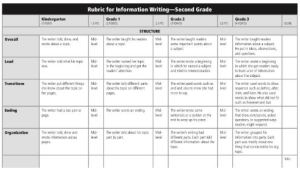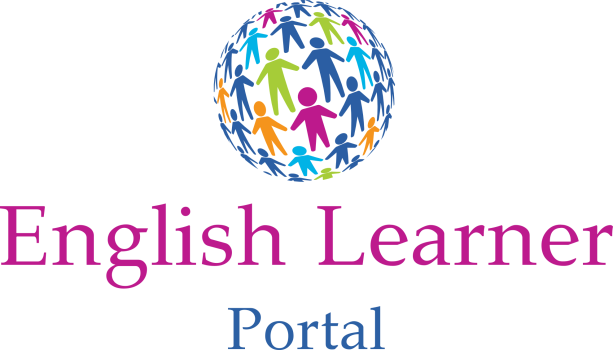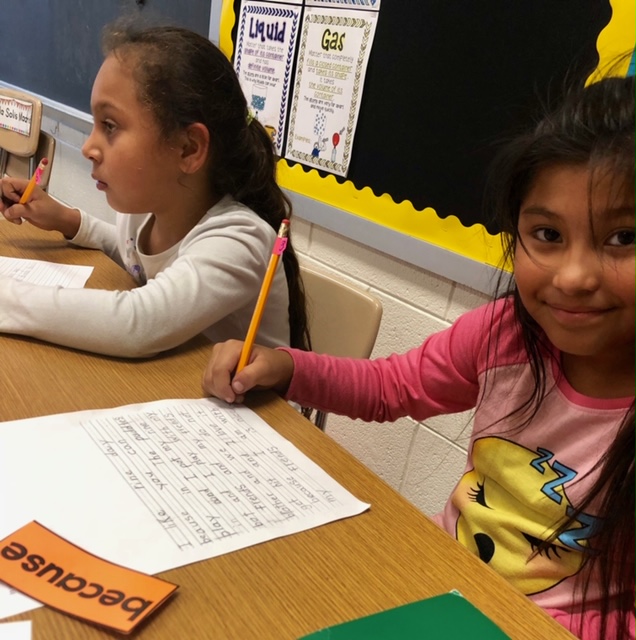Making the Grade: Process, Product, or Language Proficiency in Evaluating Writing?

by Susan Zimmerman-Orozco
Susan is an elementary ESL teacher in Montgomery County Public Schools and consultant with English Learner Portal.
By now most teachers across the nation have made it through the first marking period – and with it, the first report card. As an ESL teacher in my district, my grading and reporting obligation has usually been met by submitting WIDA proficiency scores for the four skill areas on content we have studied and assessed throughout the marking period. USUALLY, that is, until this year when I became a co-teacher and BFF with the Lucy Calkins writing program.
and with it, the first report card. As an ESL teacher in my district, my grading and reporting obligation has usually been met by submitting WIDA proficiency scores for the four skill areas on content we have studied and assessed throughout the marking period. USUALLY, that is, until this year when I became a co-teacher and BFF with the Lucy Calkins writing program.
 For the first time in many years I feel like a content teacher, and I want my students to feel evaluated – by me – not only on their English language proficiency, but also on their growing proficiency as writers. Ah, but whose criteria of their writing ability should I use? For example, the Lucy Calkins program provides checklists of skills students are acquiring throughout each unit. These skills provide valuable information to English learners and their teachers, about what they are demonstrating, or still need to demonstrate, to be good writers.
For the first time in many years I feel like a content teacher, and I want my students to feel evaluated – by me – not only on their English language proficiency, but also on their growing proficiency as writers. Ah, but whose criteria of their writing ability should I use? For example, the Lucy Calkins program provides checklists of skills students are acquiring throughout each unit. These skills provide valuable information to English learners and their teachers, about what they are demonstrating, or still need to demonstrate, to be good writers.
The Common Core curriculum also provides standards-based criteria and indicators  for measuring content mastery in writing. These give teachers the benchmarks for measuring mastery of student progress in grade-level writing ability.
for measuring content mastery in writing. These give teachers the benchmarks for measuring mastery of student progress in grade-level writing ability.
Last but not least, our district provides five grading indicators on the report card, one for each writing focus topics (informative, narration, and opinion), one for process, and one for use of language, including spelling,  punctuation, and sentence mechanics. This presumably lets parents and their children know if they are making acceptable progress in their studies.
punctuation, and sentence mechanics. This presumably lets parents and their children know if they are making acceptable progress in their studies.
If you could see my face right now, you would see something like this avatar. And full  disclosure, I truly did not even consider the implications of grading until it was already too late for this marking period. I had assumed that, per usual, I could rely on my WIDA proficiency levels to “grade” my English learners, and on my mainstream teachers for classroom grades in writing.
disclosure, I truly did not even consider the implications of grading until it was already too late for this marking period. I had assumed that, per usual, I could rely on my WIDA proficiency levels to “grade” my English learners, and on my mainstream teachers for classroom grades in writing.
Since I am also bilingual in Spanish, I am also called upon to interpret for my classroom teachers for our end-of-first-marking-period parent-teacher  conferences. Therefore, as I sat through one conference after another hearing some of my favorite teachers offer vague and somewhat superficial explanations for how our students were progressing and being graded in writing, I realized, “We have TOTALLY failed these students.” Not only have we not given them clear and quantitative criteria for measuring their progress towards mastering the content area, we have not formulated a clear and purposeful plan for building on what they already know and are able to do now in order to improve their writing in the future.
conferences. Therefore, as I sat through one conference after another hearing some of my favorite teachers offer vague and somewhat superficial explanations for how our students were progressing and being graded in writing, I realized, “We have TOTALLY failed these students.” Not only have we not given them clear and quantitative criteria for measuring their progress towards mastering the content area, we have not formulated a clear and purposeful plan for building on what they already know and are able to do now in order to improve their writing in the future.
Now, I’m not saying their grades were bad. In fact, they were lovely. But when a bright and fully-engaged native speaker and an ESOL WIDA proficiency level 2 student get exactly the same grade on their report cards, and you as the teacher are fully aware of the difference in their final product, we as educators have to ask ourselves, (a) what are we really communicating in terms of standards-based performance indicators and criteria for success to our students, and (b) how do we plan for future instruction, putting into place interventions, scaffolds, supports, and strategies that will actually support our English learners to make these grades anything more than a feel-good kinda-sorta representation of their effort?
In larger terms the question is, as we move into the next marking period: How will we clarify for ourselves as a school, a grade-level team, or as a co-teachers, the indicators  and criteria for success that will not only inform students of our shared expectations for writing but which also will serve to better inform the rationale behind their report card grades.
and criteria for success that will not only inform students of our shared expectations for writing but which also will serve to better inform the rationale behind their report card grades.
And no, right now, I really do not have an answer to that dilemma. But I think it’s an important one to solve, because upon our response hinges the most important question of all: how do we as ESL teachers work with our classroom teachers to plan and instruct for student success in writing. Stay tuned, and as always please please please, let us know via the comments section below or email how you and your school are managing these issues.
I hope you will travel with us as we puzzle out the best way to use Lucy to help our English learners – and all of our students. But even more importantly, I hope you will share your own challenges, your successes, and your suggestions and recommendations for using Lucy to show these, our most fragile, learners that not only can they succeed as writers but also excel!
~~~~~~~~~~~~~~~~~~~~~~~~~~~~~~~~~~~~~~~~~~~~~~~~~~~~~~~~~~~
If you aren’t already part of our mailing list, please sign up HERE to receive freebies, announcements, and just to get to know us! Looking for new ideas and graduate credits? Visit our Online Professional Development School! Please visit the ELP website to meet the team and learn more about our services.

